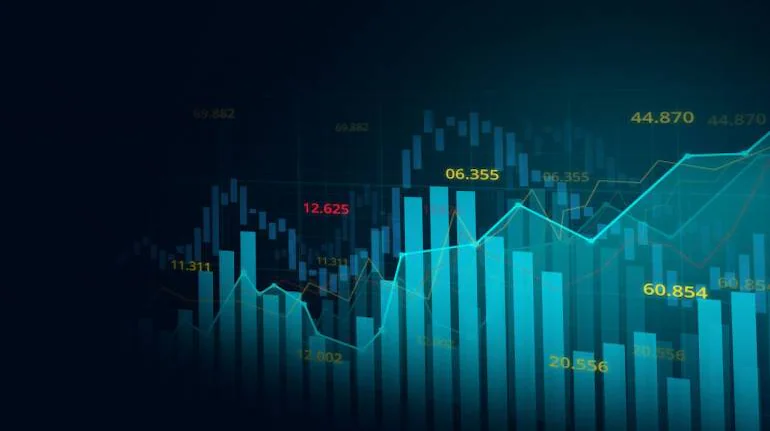-
Introduction: India’s Stock Market—No Longer in a Vacuum
The Indian stock market is no longer isolated. With rising globalization, capital flow, and trade interconnectedness, global events now ripple into Dalal Street faster than ever. From geopolitical tension in the Middle East to inflation decisions in the US, everything affects your Nifty and Sensex. 2025 has already proven this with multiple catalysts pushing Indian markets into high-volatility zones. This blog explores exactly how global events are impacting Indian markets—and what it means for your portfolio.
-
US Federal Reserve’s Policy & Indian Market Volatility
🔸The Federal Reserve’s monetary policy has always had a knock-on effect on emerging markets like India, but 2025 has magnified this impact tenfold. The Fed’s decision to hold rates higher for longer due to sticky inflation in the US has caused foreign portfolio investors (FPIs) to become cautious about Indian equities. This hesitation has triggered outflows, weakening the INR and increasing bond yields in India.
🔸The rising interest rate differential between India and the US makes Indian assets relatively less attractive. High US yields also make the US dollar stronger, resulting in downward pressure on the INR, which in turn affects sectors reliant on imports like oil & gas, aviation, and electronics. Moreover, this volatility forces the RBI to intervene more frequently in the forex markets, diverting its monetary resources.
-
Crude Oil Prices and Their Domino Effect on Indian Inflation
🔸India imports over 80% of its crude oil needs. In 2025, oil prices surged past $100/barrel again due to OPEC+ production cuts and geopolitical disruptions in the Strait of Hormuz. Every time oil prices rise, it directly impacts the Indian economy through import bills, current account deficit (CAD), and inflation.
🔸A higher oil bill puts pressure on government finances and increases transportation and logistics costs, which get passed down to consumer prices. This “cost-push inflation” impacts sectors like FMCG, logistics, paints, and aviation. Additionally, higher fuel costs squeeze consumer purchasing power, affecting demand-sensitive sectors like auto and real estate.
-
Geopolitical Conflicts: Ukraine War, Israel-Iran Tensions, China-Taiwan
🔸2025 is proving to be one of the most geopolitically unstable years of the decade. The Russia-Ukraine war has entered its third year with NATO indirectly escalating tensions. Meanwhile, rising hostilities between Israel and Iran have led to supply chain blockages in West Asia, and the Taiwan Strait remains a flashpoint for semiconductor supply disruption.
🔸For India, the knock-on effects include:
👉 Volatile global supply chains, especially in semiconductors, electronics, and energy.
👉 Global risk-off sentiment, causing equity outflows from emerging markets.
👉 Rise in gold prices, leading to surge in domestic demand for safe-haven assets.
🔸Companies that depend heavily on imports—especially manufacturing, IT hardware, and pharmaceuticals—are seeing margin pressures due to elevated shipping costs and inventory challenges. Also, the global uncertainty makes institutional investors adopt a “wait-and-watch” strategy.
-
Global Recession Fears and Impact on Indian Exporters
🔸Though India’s GDP remains strong in 2025 (projected 6.8% YoY), global economic slowdown—especially in Europe and China—is affecting India’s export-heavy sectors. Indian IT, textiles, engineering goods, and pharmaceuticals have already reported single-digit export growth, a sharp fall compared to previous years.
🔸US companies are cutting IT spending due to recessionary pressure. European demand for textiles and garments has slowed. Chinese slowdown is impacting global commodity prices, creating margin stress for Indian steel and chemical exporters. This leads to subdued earnings outlook and stock price corrections in B2B heavy sectors.
-
US-China Tech War and India’s Semiconductor Dream
🔸The intensifying US-China tech cold war has led to chip bans, AI regulation restrictions, and export controls on rare earths. While this is risky for global tech stability, India sees this as an opportunity. India’s semiconductor mission is getting a boost with fabs being set up in Gujarat and Karnataka in partnership with US, Taiwan, and Japanese players.
🔸For investors, this means the birth of a new sunrise sector in India. Stocks in the electronics, semiconductor, AI, and defense sectors are seeing bullish sentiment. Moreover, global supply chain diversification is pushing foreign firms to invest in Indian manufacturing—a theme likely to define the next 5 years.
-
China’s Slowdown and the ‘China + 1’ Strategy
🔸China’s economic growth has stalled below 5% in 2025 due to real estate crisis, youth unemployment, and deflation. Global companies are moving out or de-risking from China. India, Vietnam, and Mexico are top alternatives. The “China + 1” narrative is fueling manufacturing, logistics, auto components, and electronics sectors in India.
🔸The PLI (Production Linked Incentive) schemes have found new tailwinds. Global brands like Apple, Tesla, and Samsung are investing heavily in India, not just for assembly but also for component sourcing. This has given rise to multi-bagger stock potential in Indian mid-cap and small-cap manufacturing companies.
-
Global ESG Mandates and India’s Green Shift
🔸ESG investing is no longer a buzzword; it’s a mandate. Global investors in 2025 prefer companies with clean governance, sustainability, and net-zero commitments. Indian firms are rapidly pivoting towards renewable energy, EVs, and green infrastructure. Reliance, Adani Green, Tata Power, and NTPC are big beneficiaries.
🔸India’s own climate agenda, like net-zero by 2070, is aligning with global investor mandates. This has made India a top destination for green bonds, climate tech investments, and sustainable funds, significantly boosting long-term investor confidence.
-
Foreign Institutional Investors (FIIs): Risk Appetite Shift in 2025
🔸FIIs have turned selective in 2025. While inflows into Indian equity remain stable, they are now more sector- and theme-specific. Global investors are staying away from highly valued consumer-facing stocks and are pouring money into value sectors like banking, infra, and defense.
🔸Factors influencing FII behavior:
👉 Global inflation volatility.
👉 Risk-off due to geopolitical shocks.
👉 Shift towards sectors with predictable cash flows and margin protection.
This shift has also changed market dynamics, pushing defensive stocks into the limelight and increasing retail investor participation in mid- and small-caps.
-
Rise of BRICS and De-Dollarization Talk
🔸BRICS expansion and their push for trading in local currencies has introduced long-term structural change possibilities. Although still in infancy, this narrative weakens US dollar hegemony over time. India stands to benefit by increasing trade in INR with Russia, UAE, and other BRICS+ nations.
🔸For markets, this introduces a potential long-term trend: Reduced dollar dependency = stronger INR = reduced imported inflation = bullish domestic economy. While it’s not priced in yet, savvy investors are keeping an eye on this macro theme.
-
AI Boom Globally and India’s Tech Evolution
🔸AI is driving global equity markets, and India is no exception. 2025 has witnessed a strong rally in Indian IT, SaaS, and analytics companies embracing AI-first solutions. Startups like Fractal, Persistent, and L&T Technology Services are tapping into the AI wave.
🔸Moreover, global firms outsourcing AI work to India due to its tech talent pool is a game-changer. The AI + IT convergence is making Indian midcap IT stocks attractive and creating long-term secular bull runs in digital transformation themes.
-
Conclusion: Prepare for a Globally Entangled Market in 2025
2025 is not just another year—it’s the year that’s reshaping how investors view the Indian stock market. No longer isolated, India is now fully integrated into the global economic and geopolitical chessboard. The smart investor knows that understanding domestic fundamentals is not enough. Global awareness = better risk management + better portfolio allocation.
Whether it’s oil, Fed, tech war, or China’s decline—every ripple hits the Indian shore. Stay updated. Stay agile. Invest wisely.




